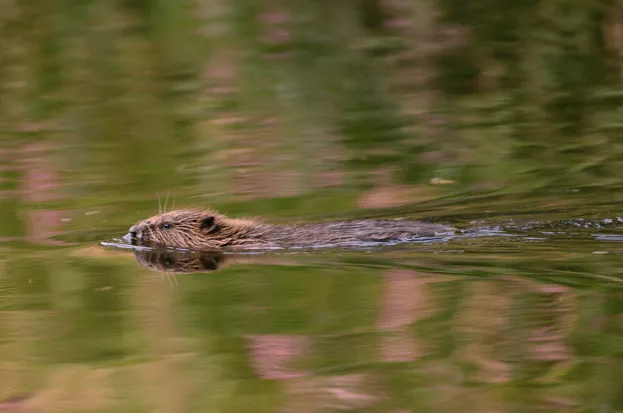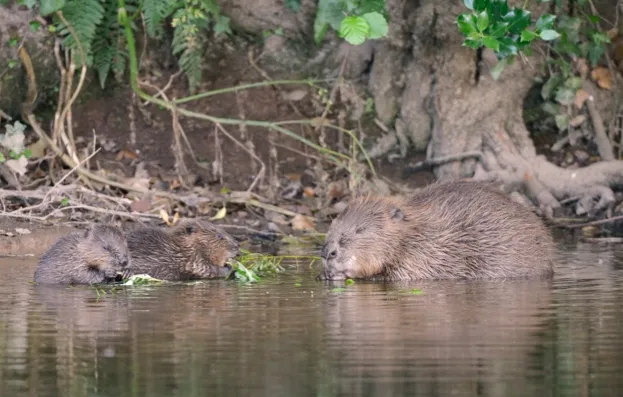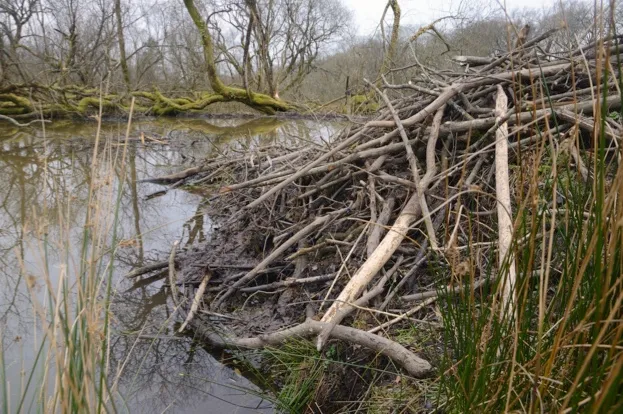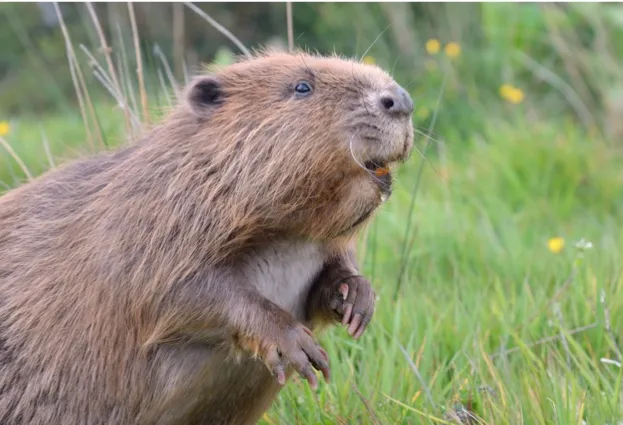Last summer a small farm, tucked away in a quiet corner of mid-Cornwall, became the unlikely focus of a frenzy of media attention. Local and national press gathered to capture the moment when a single pair of Eurasian beavers was released into a five-acre enclosure. A small step for these two mammals, but a giant one for the Cornwall Beaver Project.
The beaver release programme at Woodland Valley Farm is the latest in a handful of schemes across the country, but this Cornish project has one very important difference. Incredibly, for the first time ever, anywhere, scientists will be able to gather crucial ‘before-and-after’ data to produce the most detailed picture yet of how these ecosystem-engineers influence and shape their environment.

Beavers are well adapted to a semi-aquatic life, perfectly at home in a variety of freshwater habitats © Nick Upton / Nature Picture Library
There is a growing body of evidence that beavers could be powerful natural allies as we try to turn the tide on a whole smorgasbord of man-made problems. Among the many environmental ills they may help cure are flooding, soil erosion, habitat and species loss, agricultural run-off entering waterways and freshwater pollution more generally. Not bad for a bunch of rodents.
Beavers are semi-aquatic mammals that need deep, still water to feel safe from predators and raise their young. If there is no suitable habitat in the area, they simply engineer it themselves. Thousands of years of evolution have seen to it that beavers will compulsively dam up fast flowing streams if no agreeably deep water is available.

Beaver kits may stay with their parents for up to two years © Nick Upton / Nature Picture Library
Armed with powerful jaws and impressive, chisel-like incisors, they do this by felling trees whose trunks are driven vertically to create the initial framework of the dam. The beavers work quickly and methodically to reinforce the structure with small branches, twigs, rocks and even mud that they knead into the smallest gaps. The slightest sound of trickling water sends them into a flurry of activity as they locate and plug up any leaks.
The result is a quiet, still beaver pond in which they can build their lodge. At first glance, it looks like a chaotic tangle of branches and twigs, but there is method in the ‘madness’. The structure is like a thatched mesh, laced with a muddy paste to strengthen it. An underwater entrance, which can be accessed only by the beavers, is the final line of defence from predators and the elements. Once they’re safely inside, the snug lodge provides shelter through the winter and a place to have kits.

Beavers sometimes prefer to use natural holes or burrow into banks. Elsewhere, including where the water is too fast-moving, they build lodges from sticks and branches © Nick Upton / Nature Picture Library
At one time the Eurasian beaver, along with its North American counterpart Castor canadensis, was widespread across much of the Northern Hemisphere. Numbering in the millions, beavers had a huge impact, buffering the flow of water and nutrients through the landscape and keeping aquatic systems stable and healthy.
But the animals were valued instead for their fur and castoreum, an anal secretion that you might be surprised to learn was – and still is – used as a vanilla flavour enhancer. Demand fuelled a lively trapping industry that caused populations of both species to crash. In the British Isles, beavers were driven to extinction by the 1500s.

A series of reintroductions in the UK and other countries has enabled the beavers to return © Nick Upton / Nature Picture Library
Today the hope is that the Cornish Beaver Project will mark another successful step towards a future when these industrious mammals are once more an intrinsic part of our landscape. The project is a partnership between Chris Jones, the Cornwall Wildlife Trust and a team of scientists led by hydrologist Prof Richard Brazier from the University of Exeter. But calling it a partnership doesn’t quite do it justice. The collaboration has developed into friendship; trust and good communication are the hallmarks of an ambitious scheme that has taken hard graft to get off the ground.
